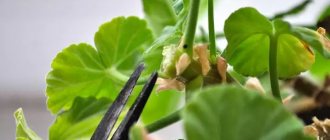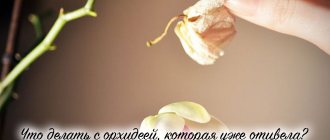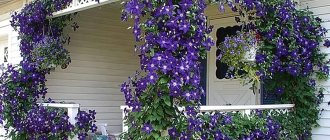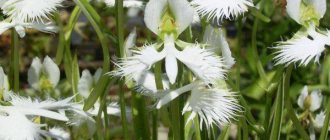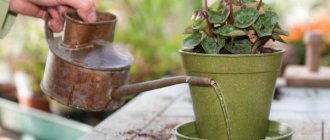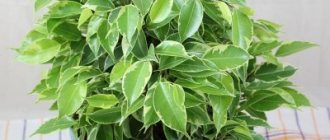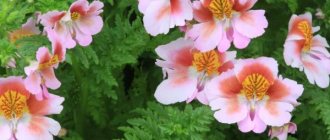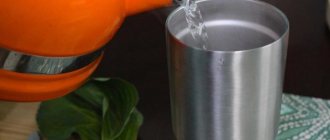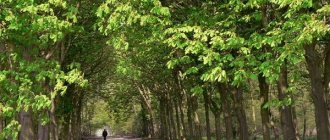Chestnutspermum cannot be confused with any other indoor plant. The unusual growth from a huge bean, odd-pinnate wavy shiny leaves and the status of a rare and valuable plant are very attractive to experienced gardeners. At a young age, chestnutspermum looks very bright and original, but over time it reveals its special giant character and sooner or later becomes too large for living rooms. And preserving a plant even for several years is not at all so easy. I’ll tell you how to grow indoor chestnuts in my article.
Indoor chestnut, or Kashtanospermum - for experienced gardeners. © allegro
Description of the plant
Chestnutspermums are perceived as large trees both in appearance and in size. And they surprise you with their belonging to the Bean family. There is only one plant in the chestnutspermum genus, but it is very distinctive.
Chestnut-spermum , indoor chestnut , chestnut-spermum , Australian castanospermum, or southern we call it. And throughout the world this plant is known as Australian , or black chestnut and black beans (Castanospermum australe). This is an evergreen gigantic tree with powerful roots and smooth, shiny bark, losing its green tone only at a significant age.
Straight, slender and amazingly thin shoots, capable of holding a huge mass of leaves, grow from a giant green bean that remains above the soil surface for a long time. In this respect, chestnutspermums are somewhat reminiscent of indoor avocados, but they grow more slowly and look more interesting.
If in their homeland, Australia, these giants easily grow up to 35 m, then castanosmermums in rooms do not grow above 2 m, by which time they usually become very sick and waste away. To enhance the effectiveness, most often 3 plants are planted in one pot. After all, a single “stick” with simple leaves does not look attractive enough for sale.
After purchasing, castanospermums can be either divided or further grown as a group. The uniqueness of chestnutspermums lies in the almost identical color of the bean, leaves and shoots remaining on the surface, which together produce an unforgettable “glossy” impression.
This plant has odd-pinnate, opposite leaves that look like twigs with 5-17 huge individual leaves. Chestnut spermum deceives no less with its greenness than with its growth form. The leaf lobes are oval with pointed tips, bright dark green, glossy, up to 15 cm long and half as wide. The wavy edges only highlight how beautifully the leaves shine and how flawless they look.
The fruiting of chestnutspermums quickly puts into place all the deceptive features of appearance and makes it clear that they belong to a legume, but, unfortunately, in indoor conditions you cannot admire the leguminous fruits with huge beans. Indoor chestnuts do not bloom; very beautiful inflorescences, dense, up to 34 cm in length, consisting of yellow-orange-reddish moth-like flowers, can only be appreciated in natural conditions.
The fruits are spongy cylinder-shaped pods up to 25 cm in length and 6 cm in diameter. They contain dark seeds up to 3.5 cm in size, somewhat reminiscent of green chestnuts. Edible seeds, after complex processing and grinding, have been one of the most valuable food crops of the aborigines of Australia and Oceania for many millennia.
Chestnutspermum, or Indoor chestnut (Castanospermum australe). © Beards & Daisies
Where do edible chestnuts grow and when do they bloom?
Edible chestnuts are significantly different from the horse chestnuts we are all used to. The tree is not tall, and the fruits are smaller than those of the horse species. The plant prefers dry and temperate climates. It does not tolerate heat well, but does not like frost either. Grows in Crimea, the Caucasus, North America and Asia. The plant blooms from the very beginning of summer until the end of June.
Where do edible chestnuts grow and when do they bloom?
Growing conditions for indoor castanospermum
The key to keeping castanospermum for at least a few years before losing compactness remains good lighting. His requests are “Australian”, so the plant often suffers in indoor format.
Lighting and placement
The place for this Australian should be as bright as possible, but without direct sun. In summer, midday rays leave scar-like burns on the leaves, which spoil the entire impression of the plant. Chestnutspermum grows well on eastern and western windows; it can be accustomed to light partial shade and distance from the window (no further than 1 m). But usually the older it is, the more lighting it requires and the more it suffers even at the south window.
In winter, chestnutspermum will not refuse the sunniest place in the house or additional lighting; it may partially lose leaves from lack of light. And he always stretches out faster; with age he gets sick more often.
From Australian forests to our windowsills
The eastern coasts of Australia are practically occupied by chestnut trees. Entire chestnut jungles spontaneously filled the humid terrain of the mainland. The region is characterized by an abundance of rain and high moisture. This is not a very common tree for Europeans.
The Australian chestnut has a slightly different appearance. Evergreen trees with dense, oblong-shaped leaves. In nature, the tree lives a long time, 50-150 years, and can reach a height of up to 40 meters. The domesticated crop grows up to three meters indoors. With good care it will grow forever.
Caring for indoor chestnuts at home
Demanding on hygiene no less than on lighting, castanospermum pleasantly surprises with simpler watering requirements. Doesn't like extremes, but generally requires standard regular care.
Watering and air humidity
Water castanospermum abundantly, but without stagnation of water. It survives droughts, but short ones; dampness is more dangerous for it. It is better to let only 1-2 cm of soil at the top of the substrate dry out between waterings, but immediately drain the excess water from the pan. In winter, watering is halved.
The plant will not refuse constant high air humidity. Castanospermum retains its “brilliant” appearance at levels above 60%. Frequent spraying or humidifiers (pallets or devices) will create ideal conditions for this exotic.
Chestnutspermum loves to be showered; the leaves must be kept impeccably clean. For chestnut spermum, only very warm, soft water is suitable.
Top dressing and fertilizer composition
Feeding for chestnutspermum in the first months is not needed at all: huge beans “supply” the plant with everything it needs. But adult trees, from the moment the cotyledons separate from the trunks and shrink, during the period of active growth, from early spring to mid-autumn, require frequent feeding.
To meet the nutrient needs of this legume, it is best to apply fertilizer every week at the dosage recommended by the manufacturer. Humic and other organic fertilizers of universal use are preferred.
Huge beans “supply” the chestnutspermum with everything it needs. © DianesDigitals
Pruning and formation of castanospermum
The only method of containing chestnutspermum is by pinching the tops of plants that are losing their compactness. Dry, damaged leaves can be trimmed partially and as needed.
Transplantation, containers and substrate
The powerful roots of castanospermum require tall, spacious containers with good drainage holes and a high layer of drainage at the bottom. Chestnut spermum is handled only after separating the bean cotyledons, keeping the earthen lump intact, in early spring, focusing on the beginning of active growth. You should not replant the plant if its roots have not completely entwined the earthen ball, since this exotic plant reacts very painfully to replanting.
Any substrate for chestnutspermum is suitable, as long as it has a fairly loose texture and a neutral or slightly acidic reaction. The substrate is ideal for palm trees, ficus or tub plants, a universal soil mixture of compost, turf and leaf soil and sand in equal parts. If possible, it is better to add raising agents to the soil - perlite, coconut fiber, sphagnum.
When replanting, the depth level of the plant must be left the same, and the stem, after separating the lobes, should be placed at the same level as with them. If for some reason castanospermum is replanted with a bean, you need to be as careful as possible, trying not to touch it or bury it.
Reproduction
There are two main methods of propagation: seeds and cuttings. Almost anyone can propagate by seeds, while propagation by cuttings requires certain skills.
Seminal
The seeds are difficult to obtain at a flower shop, but can be ordered online. Before sowing, it is necessary to prepare the material for planting. Soak the seeds for one day in warm water, and after cooling, change the water periodically.
Planting is carried out in the first half of spring. Seeds are sown in a slightly moistened mixture of sand and peat. The planting box is covered with transparent polyethylene. Place the box in a warm, bright place for germination.
Ventilate the room daily and remove drops of condensation, and water the soil if necessary. It will take almost a year for seeds to germinate at home, so you will see the first shoots only next spring. As soon as the first shoots appear, remove the plastic film so that the shoots become accustomed to the conditions in the house.
When the young sprouts have three full leaves, they are transplanted into separate containers, and after some time they are transferred to permanent pots.
Chestnut leaves turn yellow in summer - leaf diseases
Chestnut is a fairly unpretentious plant, but with the slightest errors in care it gets sick. You can tell this by looking at the leaves.
Diseases of chestnut leaves:
- Hole spot. Small punctures immediately appear, which then grow and cover the entire crown. Main reasons: too much moisture, not enough potassium.
- Black spot. Black spots appear on the leaves, which soon cover all the leaves.
- Brown and red spotting. Occurs due to temperature changes and very dry summers. The spots are red or brown and cover the leaves on both sides.
- Powdery mildew. Presented with a gray-white coating. It covers the leaves on top. This is a fungus that is actively growing.
To combat all leaf diseases it is necessary to adjust the growing conditions. It is also necessary to apply fertilizers and water with fungicides.
Chestnut leaves turn yellow in summer - leaf diseases
Chestnut is a beautiful and interesting plant that can cleanse negative emotions and give relaxation.
How to plant chestnut, which side?
You can completely forget about the nut for a while. Of course, manipulation with wet sand and a refrigerator significantly improves the plant's similarity and vigor. But many summer residents resort to another method.
Instructions:
- In the fall, for planting, choose those nuts that have fallen from the trees themselves. Select large and undamaged nuts.
- Bury them in the ground between the roots and cover them with leaves. In the spring, dig up the place and carefully inspect the nuts.
- When you see the sprouts, select the largest ones. Gardeners recommend trimming the root system. In this case, the plants grow normally and take up little space.
- Be sure to place sand and fertilizer in the hole. This is necessary for drainage and fertilization of the soil.
How to plant chestnut, which side?
Why doesn't the chestnut tree bloom?
There are many reasons why chestnut does not bloom. This is not only a lack of fertilizers. The reasons can be quite banal.
Reasons for lack of color:
- Young age. If your plant is under 15 years old, don't worry. Some varieties bloom after 15 years.
- Lack of space. It is necessary that there is enough space around the chestnuts. Approximately 3 m is required; this distance should be observed when planting seedlings.
- Lack of heat. This plant loves warm climates. Therefore, in cold years there may be very little color.
- Little fertilizer. Once a year, introduce complex fertilizers and saltpeter.
Why doesn't the chestnut tree bloom?
Is it possible to plant chestnuts near the house: signs
Chestnut is an amazing tree with a lot of signs around it. First of all, it is worth remembering that chestnuts should not be planted from nuts. This is due to some bad omens.
Signs:
- If you planted a chestnut from a walnut, then death will occur when the tree grows to the height of the person who planted it.
- Perhaps the owner of the tree will begin to get sick. Therefore, it is recommended to grow chestnuts not from nuts, but to purchase seedlings.
- Chestnut is a vampire tree. It absorbs both negative and positive energy. It will help reset all accumulated negativity.
- This tree is considered selfish; it absorbs energy, but does not saturate it. Therefore, you can plant the plant near your house.
Is it possible to plant chestnuts near the house: signs
Choosing a location for a tree
Chestnuts like space and good lighting from all sides. Choose a place for them at a distance of 7-10 meters from buildings, fences and about 5 meters on each side. Please note that the plant needs protection from drafts. An ideal place for relaxation in the summer is to place a children's playground under the thick crown of a tree, install a table with benches, and hang a hammock. Even herbs grow poorly in its dense shade, and even more so flowers. Chestnuts love loamy and chernozem soils. When planting in loamy soils, add sand to the holes, and in loose soils add a little clay.
